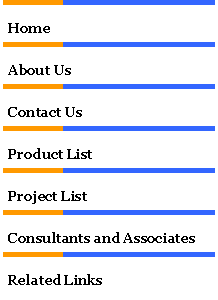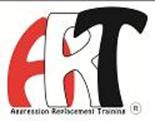AGGRESSION REPLACEMENT TRAININGŪ (ARTŪ)
Aggression is a learned behavior. It is immediately, effectively, richly and efficiently reinforced. If I am bigger than you are, and I want something of yours I can just take it. There, I have it, you don't. I get what I want, and my aggression has paid off.
Aggression is a complex, not complicated behavior. Since it is learned, and learned at a very early age, learned in our communities, schools, churches, and homes, we needed to develop an intervention that would get young people to unlearn what had been successfully reinforced and substitute something more beneficial.
Dr. Arnold P. Goldstein and Dr. Barry Glick posited that if aggression was a complex learned behavior, it needed to be countered from a number of fronts. First, most juvenile offenders lack the basic social skills to use in angry producing situations. As you probably know from other sources, these juvenile offenders never learned basic skills in the first instance. As such, ARTŪ has as its behavioral component Structured Learning Training (SLT). Even if young people know what to do in an angry producing situation, their emotions often get in the way. As such, we included a second component in ARTŪ, that of Anger Control Training. ACT is the affective component. Finally, juvenile offenders may know what skill to use, and even control their anger enough to use the pro-social skill, yet choose not to use the skill. To mitigate against this dynamic in what we thought to be the root inhibitors to mitigate against aggression, we included Moral Reasoning, the cognitive component, in order to train young people a process of how to view their world in a more fair, equitable, and just manner.
What is ARTŪ? Well first let us tell you what ARTŪ is NOT. ARTŪ is not:
** traditional psychotherapy, whether it be psychoanalysis, client centered, or behaviorism.
** group guidance or advice giving
** values training or clarification
** content specific
Rather, ARTŪ is an action oriented, multimodal intervention that uses specific strategies to address those contributors that cause aggressive and violent behaviors in juvenile offenders.
STRUCTURED LEARNING TRAINING (SLT)
The objective of SLT is to provide young people the skills to use in angry producing situations. These skills may be used with peers, authority figures such as parents, teachers, significant others, and even police. The techniques used to teach social skills is similar to any other learning situation. If you wanted to teach someone, say how to drive, what do you do? That is right, we would show them. After I showed them the perfect way to do the task, then what do I do? That is correct, I encourage them to try it. Here, Joe, it is your turn, you drive. After Joe tries the task, I give him feedback. We discuss what he had done, and how well he did. Then I assign him homework to practice. Teaching skills is as simple as that.
For ARTŪ, we chose ten skills (from the original 50 skill curriculum we originally developed) to train adolescents. Why, because we believed these were most useful in mitigating against aggression and violent behaviors.
ANGER CONTROL TRAINING (ACT)
Anger Control Training (ACT) is the second component of ARTŪ and was first developed by Eva Feindler at Adelphi University for pre-school children who were emotionally disturbed and aggressive. Goldstein and I adapted this intervention, modifying it for adolescents, especially those who were incarcerated and prone to aggression and violence.
ACT is based upon the A - B - C model of Aggression. A stands for antecedents; B stands for Behavior; and C stands for Consequences. The ACT module trains young people in concepts and techniques based upon each of these three concepts.
Let's take a look at the angry behavior cycle and chain more closely.
What is a trigger? Like a trigger of a gun, that which set the gun off, triggers set individuals off. There are two types of triggers, internal and external. External triggers are the conditions that make you angry. For example, if I am driving down the road, and I see in my rear view mirror a car that is being driven erratically, weaving in and out of lanes, cutting people off, I become concerned. Right by the exit that I am getting off, that same car cuts in front of me and speeds down the ramp. That is the eternal trigger. Depending what I say to myself, the internal trigger, depends on how angry I become. If I say to myself that the guy is crazy, selfish, and almost caused me to run off the road, how angry am I? If, however, I say to myself, that guy is crazy, maybe he is drunk or high on something, and he could hurt himself or someone else, I may be still angry, but am I as angry as in the first instance? And if I see a blue hospital sign at the exit, and I say to myself that the guy must have an emergency and needs to get to the hospital quickly, well, maybe I am not angry at all.
Cues are physical signs that let you know you are getting angry. What are your physical signs. What happens to your body, what do you notice when you are angry?
Reminders are phrases or statements that get us to stop and try to control our reactions. Some key phrases young offenders respond to include: Chill or chill out: Cool Down; You don't have to loose your cool; Don't let him (her) (it) get the best of you.
We then teach a series of anger reducers. These are techniques that actually help reduce aggressive reactions based upon some intervening behavior. Meichenbaum and Novaco have both done extensive work in this area. The three techniques we teach in ARTŪ are: Pleasant Imagery, Deep Breathing, and Counting Backwards.
Self Evaluation is a technique we teach the juvenile offender to use after the incident and anger control skills have been used. How did they do? Did they control their anger? Did they limit their aggressive behaviors?
Thinking ahead is another way of controlling one's behavior and is introduced next. We train young people to look at short and long range consequences, as well as if, then scenarios.
MORAL REASONING (MR)
The third component of ARTŪ, Moral Reasoning, is aimed at dealing with choosing to use pro-social skills over aggressive and violent behavior. This is the cognitive component of the program and integrates cognitive restructuring principles into ARTŪ. MR is based upon Lawrence Kohlberg's Theory of Moral Development in which individual increase their view of their world, as they develop to more fair, equitable, and just manners.
A moral dilemma is presented to a group of no more than 20 juveniles who are asked to give their opinion about the situation. Kohlberg posits that those at lower stages of moral development will increase in their development by debating the situation with those who are at higher stages of moral development. The group facilitator guides the discussion to insure interaction between the stages.
Juvenile Offenders attend ARTŪ sessions for ten weeks. They participate in one class in each of the components each week. Thus each young person spends a total of three hours each week in ARTŪ over a ten week time period.





